- Ages 2 to 5: Early Picture Books
As children grow, their attention spans lengthen, and they begin to enjoy stories. Early picture books for this group:
- Typically, have up to 500-800 words,
- Include colorful, full-page illustrations that complement the story,
- Introduce simple storylines with relatable characters.
These books are designed to be read aloud, so they often include rhythmic language or rhyme. Popular examples include The Gruffalo by Julia Donaldson and Chicka Chicka Boom Boom by Bill Martin Jr.
When working with illustration services, it’s important to ensure the illustrations are coruscating and engaging, as they are a key factor in holding a child’s attention.
- Ages 4 to 8: Early Readers and Picture Books
This group bridges the gap between picture books and independent reading. Early readers, also known as easy readers, include:
- Short sentences and repetitive vocabulary to build confidence in young readers,
- Word counts ranging from 1,000 to 3,000 words,
- Illustrations on nearly every page to support comprehension.
Examples of easy reader books include Mac and Cheese by Sarah Weeks and Big Shark, Little Shark by Anna Membrino.
Illustration services for this group often focus on providing visuals that enhance the text, making it easier for children to follow along as they develop their reading skills.
- Ages 6 to 9: Chapter Books
As children’s reading abilities advance, they are ready for chapter books. These books:
- Have a word count of 5,000 to 10,000 words,
- Include short chapters to encourage a sense of accomplishment,
- Often feature black-and-white sketches instead of full-color illustrations.
Examples include Amelia Bedelia by Peggy Parish and Unicorn Academy by Julie Sykes. The illustrations in chapter books are minimal but still play a role in breaking up the text and aiding visualization.
- Ages 8 to 12: Middle-Grade Novels
Middle-grade readers have more advanced comprehension skills and are ready for longer, more complex stories. Books for this group:
- Typically have 30,000 to 50,000 words,
- Focus on characters and stories kids can relate to, such as friendships, adventures, and moral dilemmas,
- Rarely include illustrations, though some might have minimal sketches.
Examples of middle-grade children’s literature include Diary of a Wimpy Kid by Jeff Kinney and Charlie and the Chocolate Factory by Roald Dahl.
- Ages 12 to 18: Young Adult (YA) Novels
Young Adult novels fall under children’s literature but are aimed at older readers. These books:
- Have word counts between 50,000 and 80,000,
- Cover more mature themes like identity, relationships, and self-discovery,
- Are rarely illustrated, though the cover design is crucial for attracting readers.
Popular examples include The Hunger Games by Suzanne Collins and Divergent by Veronica Roth.



